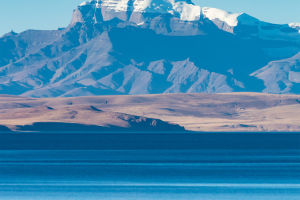When we think of deserts, the first animal that comes to mind is the camel. Known for their ability to withstand the harsh and arid environment of the desert, and their special ability to travel long distances, camels have been praised for centuries.
Camels are mammals and are known for their towering height, reaching about two meters, with raised humps on their backs. They have long neck that allows them to see far into the distance. Their fur is mostly brownish-yellow, and although they have tall body, their tail is not too long.
There are two types of camels in the world - the dromedary and the Bactrian camel. Wild Bactrian camels are the only remaining wild camels in the world and are critically endangered, with only about 950 left. All other camels are classified as domestic camels.
The gestation period of a female camel is about 13 months, and most of them give birth to one calf, and twins are rare. Young camels are born without humps, and female camels are pregnant for about 13 months. A newborn calf weighs about 90 pounds.
Camels are often used as a means of transportation in the desert because there are very few sources of water. Camels can smell water from far away, and their wide and thick feet prevent them from sinking into the soft sand.
Camels are also able to guide people in the desert, as they are familiar with the desert climate. When a strong wind is about to blow, the camel will kneel, allowing people to prepare in advance. Additionally, the camel's nostrils close tightly to prevent sand particles from entering when the wind picks up.
The camel's hump is the most recognizable feature. Contrary to popular belief, the hump is not used to store water, but to store fat. When food is scarce, these fats can be converted into water and energy. The hump also serves another purpose - it gathers all the fat into one place, keeping the rest of the camel's body cool.
The ability of camels to survive in the desert environment is also reflected in their digestive system. Camels have three-part stomachs that can hold large amounts of food and can digest rough vegetation. Their digestive system also controls water loss, allowing them to maintain water balance in the absence of water.
In addition to being a means of transportation, camels have other uses in desert regions. For example, camel pelts can be used to make tents, rugs, and other supplies. Camel milk is also an important food and medicine. In some regions, camel meat is also a common food item.
Camels have played an important role in history. On the ancient Silk Road, camels were an important means of transportation, helping people conduct trade and cultural exchanges. In modern times, camels are still used as a means of transportation and tourism in some areas.
However, due to environmental changes and human activities, wild camel populations are gradually decreasing and need to be protected. Several organizations are working to protect wild camels and their habitat, while encouraging people to follow sustainable ways of using camels.
Camels are incredible animals that have adapted to life in the desert. They have served as an important means of transportation and have played a significant role in history. It is important to protect these animals and their habitats so that future generations can appreciate their beauty and usefulness in the world.


